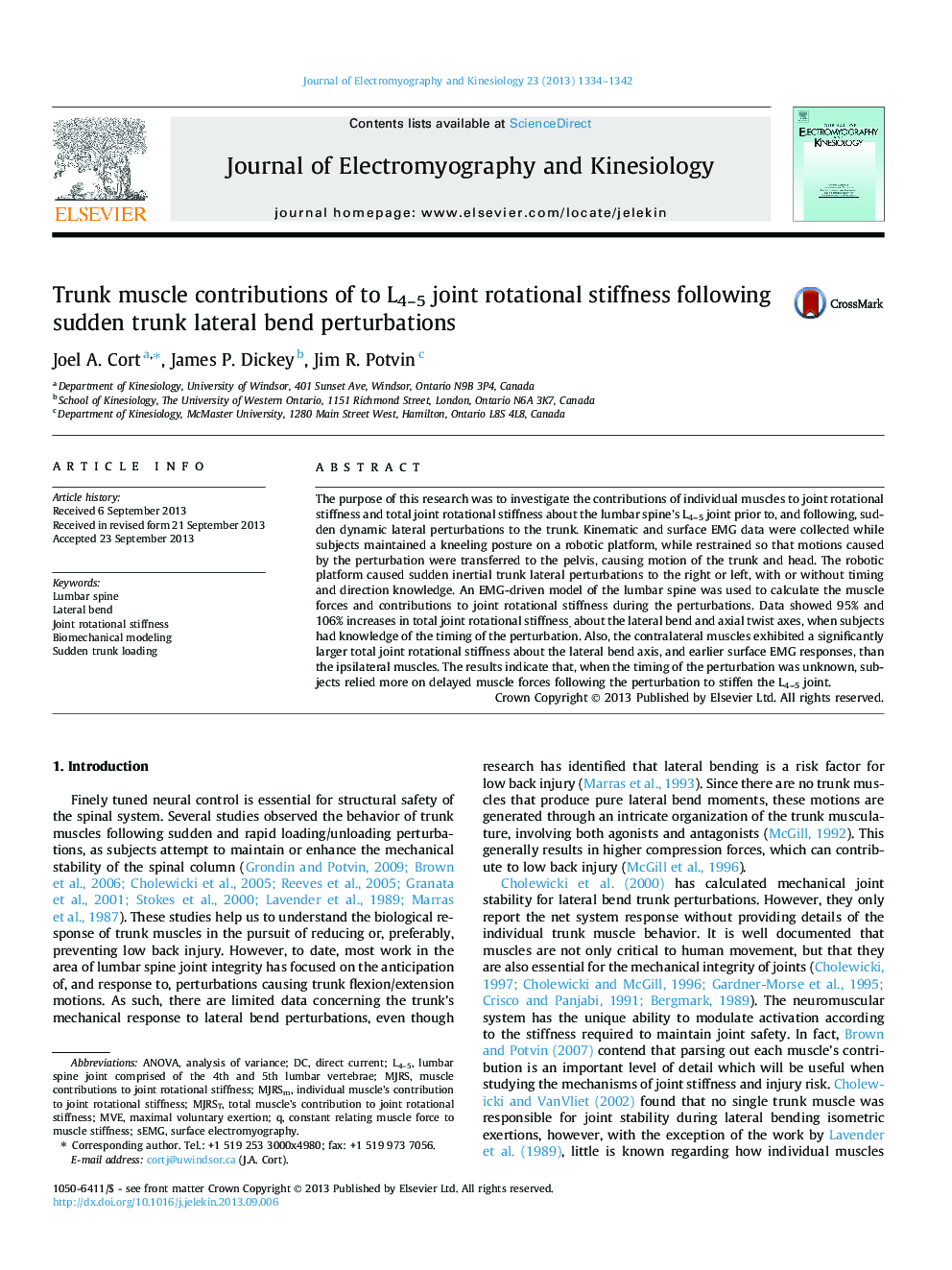| Article ID | Journal | Published Year | Pages | File Type |
|---|---|---|---|---|
| 4064809 | Journal of Electromyography and Kinesiology | 2013 | 9 Pages |
The purpose of this research was to investigate the contributions of individual muscles to joint rotational stiffness and total joint rotational stiffness about the lumbar spine’s L4–5 joint prior to, and following, sudden dynamic lateral perturbations to the trunk. Kinematic and surface EMG data were collected while subjects maintained a kneeling posture on a robotic platform, while restrained so that motions caused by the perturbation were transferred to the pelvis, causing motion of the trunk and head. The robotic platform caused sudden inertial trunk lateral perturbations to the right or left, with or without timing and direction knowledge. An EMG-driven model of the lumbar spine was used to calculate the muscle forces and contributions to joint rotational stiffness during the perturbations. Data showed 95% and 106% increases in total joint rotational stiffness, about the lateral bend and axial twist axes, when subjects had knowledge of the timing of the perturbation. Also, the contralateral muscles exhibited a significantly larger total joint rotational stiffness about the lateral bend axis, and earlier surface EMG responses, than the ipsilateral muscles. The results indicate that, when the timing of the perturbation was unknown, subjects relied more on delayed muscle forces following the perturbation to stiffen the L4–5 joint.
